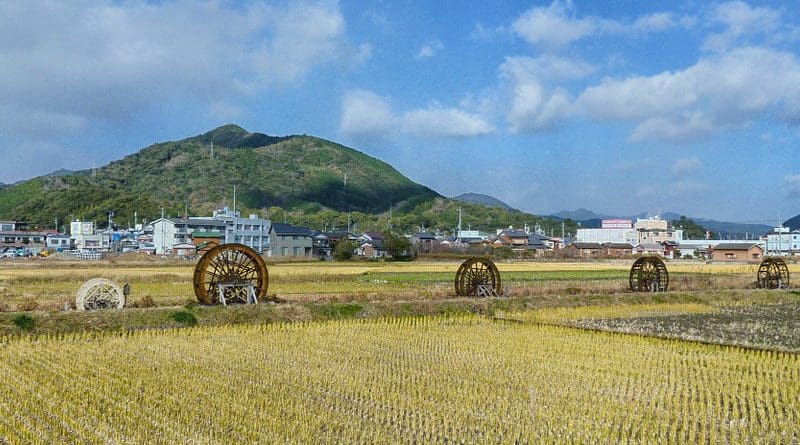Japan: Improving Working Conditions In Agriculture Sector – Analysis
By Yusaku Yoshikawa*
In 2019, the Japanese government introduced the Work Style Reform Law which sought to increase diversity in the workplace and improve working conditions. But reform has not been sufficiently discussed in one of the industries that needs it the most — agriculture.
The agriculture industry in Japan has suffered a dramatic decrease in labour, with the number of farmers decreasing by 50,000 per year. The majority of them are small-scale farmers with side jobs, who are also ageing at an advanced stage.
It has been a challenge for the sector to attract young farmers. In 2021, 52,300 farmers joined but nearly two-thirds of them were over 50 years old. The turnover rate of agricultural workers is also higher than in other sectors. The most common reasons for changing jobs are discontentment with working conditions, long labour hours and low incomes.
Despite some efforts being made to improve the working conditions of agricultural workers, such as discussionsby the Exploratory Committee on Work Style Reform in Agriculture organised by the Ministry of Agriculture, Forestry and Fisheries (MAFF), there is still a long way to go in extending the reforms.
Agriculture in Japan has long been considered a ‘family business’, with a blurred boundary between work and life. The 2020 Census of Agriculture and Forestry compiled by MAFF reported that 96 per cent of agricultural management bodies in Japan were still family-owned. On the contrary, employed workers have conventionally not been very common. Because farming activities are mostly seasonal, workers are usually employed only during the busy harvest season. Yet, Japan’s Labour Standards Act only applies to employed workers and excludes family workers engaged in agriculture.
Government statistics and laws related to employed workers in the agricultural sector are often different from those in other sectors. For example, the MAFF Census classification of employed agricultural workers — as employees that work more than seven months per year — does not match the commonly used distinction of regular and non-regular employment.
The Labour Standards Act stipulates that extra wages for overtime and holiday work do not apply to agriculture. The law also excludes the industry from regulations concerning the minimum requirement for break time and holidays for farmers, based on the understanding that agricultural work is subject to seasonal and climate conditions.
But employed workers in agriculture have become more common, especially for newcomers. 22.1 per cent of new farmers in 2021 were employed workers. For new farmers below 49 years old, 8,540 were employed workers, outnumbering the 7,190 self-employed farmers. Still, there is a lot of room to improve farmers’ working conditions further. In 2021, MAFF’s Policy Research Institute reported that 27 per cent of men and 17 per cent of women regularly employed in the agricultural sector worked over 300 days a year.
According to the report, the annual income of regularly employed workers in the sector is low compared to other industries. The average annual income for men working in the agricultural sector was 3.1 million yen (US$22,100) in 2017, compared to 5.2 million yen (US$37,200) for other industries. Women agricultural workers earned only 1.9 million yen (US$14,000) compared to an average annual income of 3.3 million yen (US$23,700). This income gap only widens as the workers’ age increases.
The working conditions for non-regular employees including part-time workers are even more challenging. In the agricultural sector, 46.8 per cent of male workers and 77.8 per cent of female workers were not regularly employed in 2017. Since they were hired for short-term contracts, their annual income was only 2 million yen (US$28,000) for men and 800,000 yen (US$6,000) for women.
Part of the reason for this low income is that agricultural management entities are having trouble securing profit out of the business which has suffered from low market prices of products and an increase in agricultural input costs such as fertiliser.
Foreign workers, such as the Technical Intern Training Program trainees, are also in vulnerable positions. The Program originally aimed to develop the capacity of trainees from countries like Vietnam and the Philippines but many criticise that it has become a means to secure cheap labour in the agriculture industry. The trainees cannot change their workplaces and often suffer from mistreatment, such as violations of security standards. Still, some good practices are balancing pleasant working environments with productivity. In these practices, comfortable working conditions have successfully attracted workers.
As the proportion of employed workers increases, agriculture is becoming less of a ‘family business’ in Japan and transforming into a more ordinary industry in terms of its working style. If this situation continues, improved working conditions for agricultural workers will eventually sustain the industry by contributing to solving challenges such as labour shortages.
*About the author: Yusaku Yoshikawa is an aid consultant at JIN Corporation.
Source: This article was published by East Asia Forum

